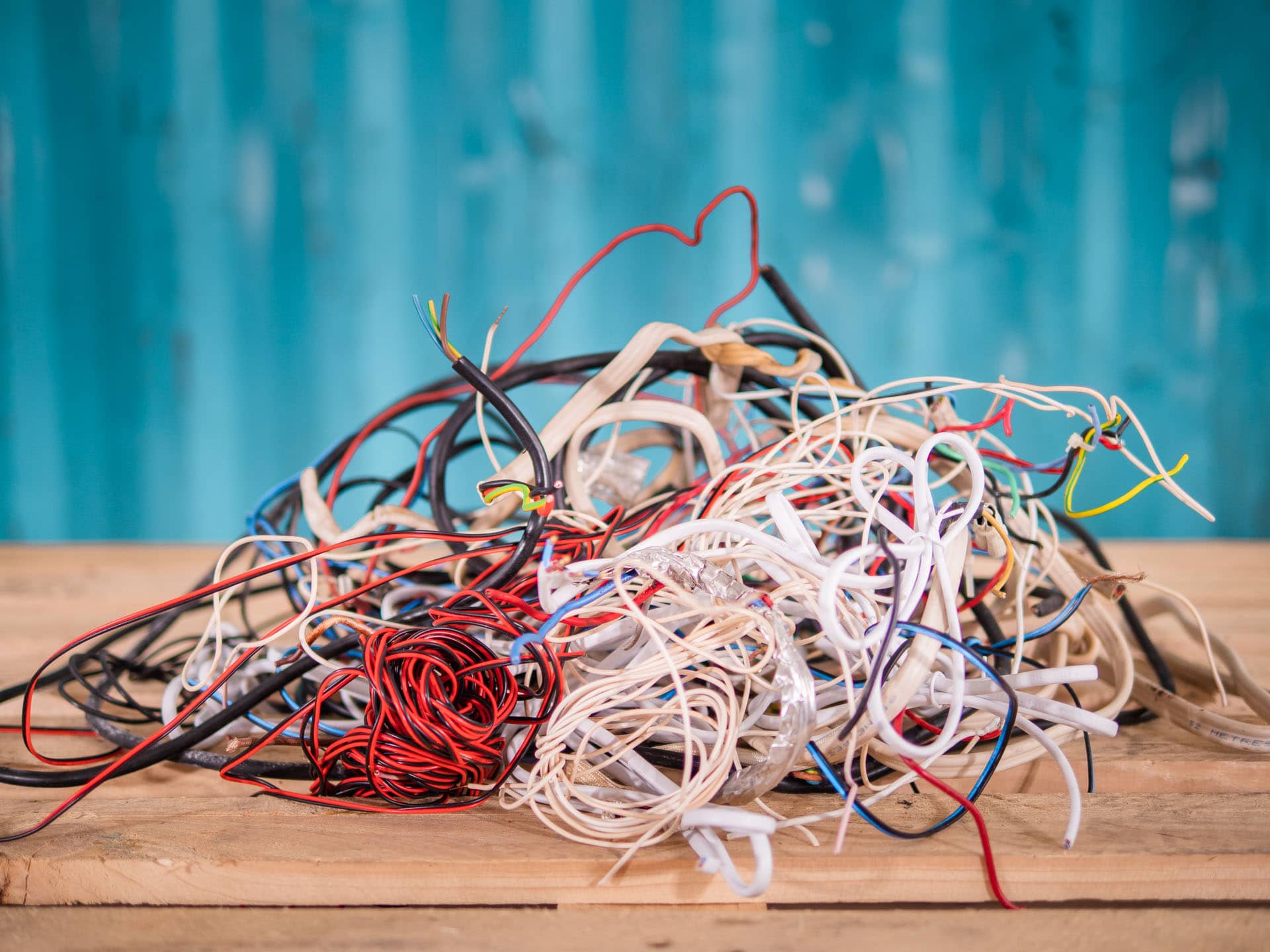Curious about your scrap cable value or how to make some extra income? Let’s talk scrapping TPS (thermoplastic-sheathed) cable.
So, what is TPS cable? You’ll find it connecting electrical equipment in homes, commercial spaces, power plants, and industrial manufacturing. If it hums, whirrs, or lights up—it’s got cable inside making it work.
TPS cable comes in many forms, with copper, aluminium, or both inside. Your payout depends on wire thickness, the metal type, and how clean that metal is. Copper and aluminium are non-ferrous (non-magnetic) metals and power just about everything in your daily life. That cable in your walls? It’s keeping you warm in winter, cool in summer, and lit up after dark.
Here’s how to get the best scrap cable value when you drop it off at one of our scrap metal collection locations.
What cable can you scrap?
Electricians—our sparkies—often bring in buckets or rolls full of mixed cable. But chances are, you’ve got scrap cable hiding at home. Check your attic or garage—TPS cable is everywhere in residential and light commercial builds.
Common cable items we recycle from households include:
Most appliances, including whiteware and electronics
Electrical wiring
Lighting
Want to check your cable scrap value? Give our team a call Monday to Friday (7 am–5 pm) or Saturday (7 am–1 pm)—we’re ready when you are.
How is cable graded and priced?
Cable is graded purely on the percentage of copper in the cable. But remember, the thickness of the cable is not representative of the amount of copper inside. The plastic can be deceiving, so the best way to check is once the cable is stripped.
Cable is mainly graded into three categories; 30% cu, 42% Cu, and 65% cu. The amount you are paid depends on the grade—the higher the percentage, the more moolah you’ll walk away with.
How to upgrade and make more money from your cable
Now, let’s iron out the details on how to get the most bang for your buck when selling your cable! Since cable is often very similar in terms of how you drop it off, there are only a few things you can do to ensure you’re getting the best bang for your buck:
- Separate your cable from other metals you scrap, so it’s not graded as ‘mixed’.
- If you have some items that are alloys (a mix of copper with another metal), keep them aside.
- Strip the insulation and sell the clean copper wiring only.
- Remove all plugs and electrical fittings.
Get in touch with the team at Endless
If you have cable scrap you want to enquire about, you can get in touch with us from Monday to Friday between 7 am to 5 pm, and on Saturdays between 7 am to 1 pm. Our friendly team would love to hear from you. Check out our scrap cable prices online, or feel free to send us an enquiry to discover what your steel treasures could be worth.
